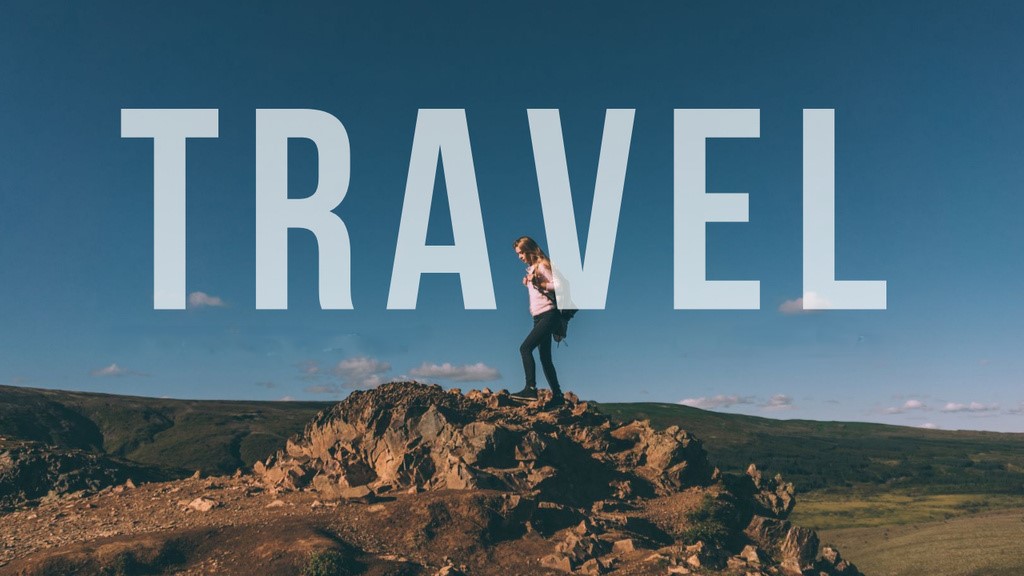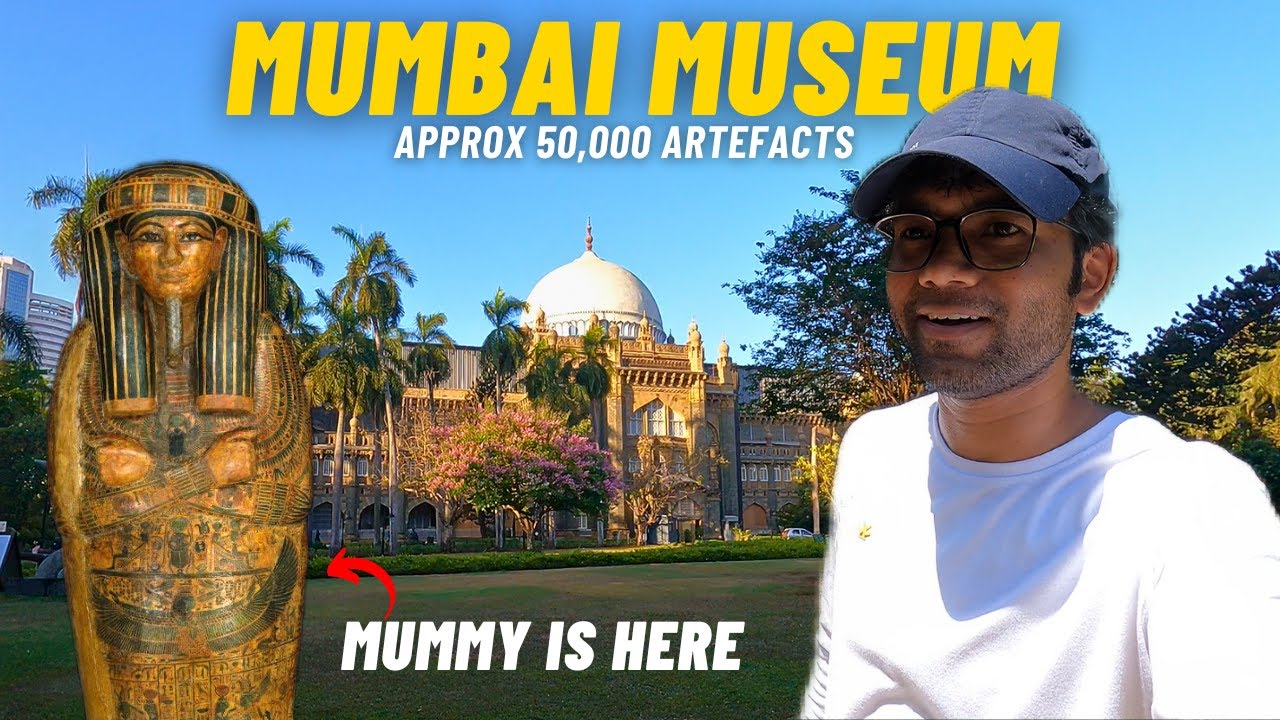Travel & Hospitality
Reverse Travel: Explore Hidden Destinations Pre-Trend

Introduction
Travel trends can change quickly, but there’s a new way to discover places before they become well-known. Reverse travel is all about finding hidden destinations before they become popular. Instead of visiting famous spots like Paris or New York, reverse travelers search for places that are still low-key, offering a more real and unique experience. This article explores what reverse travel is, why it’s becoming popular, and how you can start your own adventure to places that are still unknown to most people.
What is Reverse Travel?

Image by: Yandex.com
Reverse travel is about going against the flow of typical tourism. Instead of visiting well-known places like Paris or Tokyo, reverse travelers look for destinations that are still quiet or just starting to get noticed. These locations offer a calm and real experience, where you can connect with locals without the usual tourist crowds. It’s all about finding places that are different and full of discovery.
The attraction of reverse travel is clear: it allows you to visit places before they become too crowded. This means fewer tourists, lower prices, and a more genuine experience. It’s not just about finding hidden gems; it’s about experiencing a place in its most natural and pure form.
Why is Reverse Travel Becoming Popular?

Image by: Yandex.com
In today’s world, social media makes places become popular very quickly. Quiet spots that once felt peaceful can suddenly be swarmed by influencers and travelers. This often leads to overcrowding and higher costs, which can spoil the charm of the location. Reverse travel lets you visit a destination before everyone else discovers it, keeping the true local culture intact.
Additionally, reverse travel attracts people looking for something different. It’s not just about visiting famous places anymore; many travelers now prefer to take the road less traveled. By exploring hidden spots, travelers can experience real adventure, not just follow the same path as others.
How to Find Hidden Destinations

Image by: Yandex.com
Finding hidden places is easier than you think. Here are some simple tips to help you discover the best spots before they become popular:
1. Check Local Blogs and Social Media
Instead of looking at big travel websites, check out local blogs, social media pages, and online groups where travelers share lesser-known places. Sites like Instagram, Pinterest, and travel forums can help you find quiet locations.
2. Talk to Locals
The best recommendations often come from the people who live there. When you travel, ask locals for advice. They know about hidden places that tourists might miss and can give you tips you wouldn’t find online.
3. Explore Less Popular Countries
Look for countries that are still new to tourism. While places like Europe and the US are famous, areas in Southeast Asia, South America, or Eastern Europe may have unexplored treasures waiting for you.
4. Use Online Travel Tools
There are apps and websites that show lesser-known destinations. Websites like Atlas Obscura, for example, feature hidden spots that might not be on your usual travel list.
Popular Hidden Destinations You Should Explore

Image by: Yandex.com
Here are a few hidden places that might interest you:
1. Bucovina, Romania
Bucovina is a peaceful area in Romania known for its painted monasteries and beautiful countryside. While Romania is gaining popularity, this region is still quiet and offers a calm experience away from the usual crowds.
2. Zhangjiajie, China
Famous for its tall sandstone pillars, Zhangjiajie looks like it belongs in a fantasy movie. Though it’s becoming more popular, it still offers a peaceful escape in nature. It’s perfect for adventurers who want a calm visit.
3. Isla Holbox, Mexico
Unlike the busy beaches of Cancun, Isla Holbox is a small island with clear beaches, lively wildlife, and a relaxed vibe. It’s a great example of a place that hasn’t been overrun by tourists but is still easy to visit.
4. Tbilisi, Georgia
Tbilisi, the capital of Georgia, is a hidden gem in Eastern Europe. With its rich history, colorful street art, and great food, it’s a quiet place to experience Georgian culture.
Benefits of Reverse Travel

Image by: Yandex.com
Exploring hidden places through reverse travel has many benefits:
1. Authentic Experiences
Visiting places that aren’t crowded with tourists lets you experience the real local culture. You’ll have the chance to meet locals and learn about their traditions.
2. Lower Costs
Popular tourist spots can be expensive, especially when they’re busy. Hidden destinations usually cost less, offering a great experience without the high price.
3. Peaceful Atmosphere
Skip the crowds and enjoy the quiet beauty of a place that hasn’t yet been found by mass tourism. You’ll have more space to explore and relax.
4. Eco-friendly Travel
Reverse travel also helps promote more sustainable tourism. Many hidden places are still in the early stages of tourism, so visiting them supports responsible travel that protects the environment.
Tips for Making the Most of Reverse Travel

Image by: Yandex.com
When exploring hidden places, use these tips to make the most of your trip:
1. Respect Local Culture
Always respect the customs, traditions, and environment of the places you visit. Learn about the culture before you go and follow sustainable travel practices.
2. Stay Flexible
Hidden destinations may not be as developed as well-known spots, so be ready for challenges. Being flexible will help you enjoy your experience more.
3. Plan Ahead
Even though reverse travel is about discovering new places, it’s still important to plan. Research things like local transport, accommodations, and safety tips before you go.
4. Embrace Adventure
Reverse travel is all about stepping out of your comfort zone. Enjoy the adventure and the chance to discover new places that many people may never visit.
Challenges of Reverse Travel
While reverse travel offers amazing experiences, it also has its challenges. Finding hidden places that aren’t well-known can take extra effort. You may need to do more research, ask locals for advice, and sometimes wander off the usual tourist paths. Some of these places might not have all the modern comforts, so be ready for simpler accommodations or fewer services. However, these challenges are part of the fun and help you connect more with the destination.
The Future of Reverse Travel

Image by: Yandex.com
Looking ahead, reverse travel is likely to keep growing. As more travelers seek unique and quiet places, the popularity of reverse travel will rise. People are becoming more aware of how mass tourism impacts the environment, and they’re eager to explore hidden spots in a more sustainable way. Over time, these unknown places may become better known, but the beauty of reverse travel is that it helps keep them authentic for as long as possible. In the future, reverse travel could offer even more chances to discover new parts of the world and connect with local cultures.
Comparative Table: Popular Tourist Destinations vs. Hidden Destinations
| Feature | Popular Tourist Destinations | Hidden Destinations |
|---|---|---|
| Crowd Size | Large, often overcrowded | Small, peaceful, fewer tourists |
| Price | High (due to demand) | Lower, more affordable options |
| Authenticity | Commercialized, often less authentic | Genuine local culture and experiences |
| Accessibility | Easy to access, well-connected | May require more effort to reach |
| Environmental Impact | Can be damaging due to overcrowding | Can be more eco-friendly, less developed |
| Adventure Factor | Limited, as most spots are well-known | High, new places to explore |
This table shows how popular tourist destinations and hidden destinations differ, emphasizing the advantages of reverse travel.
Conclusion
Reverse travel is all about discovering places before they become mainstream. It gives you the chance to experience hidden gems in their most authentic form. By exploring off-the-beaten-path locations, you can enjoy quieter, more affordable trips while supporting sustainable tourism. So next time you plan a trip, think about visiting a hidden destination before it’s discovered by the masses. It’s the perfect way to make your travels truly unforgettable.
Call to Action
Are you ready to explore hidden destinations and experience the world before it’s overrun by tourists? Start your reverse travel journey today by finding lesser-known spots that will leave you with unforgettable memories. Plan your next trip now and be one of the first to discover a new part of the world!
Travel & Hospitality
Explore where is ceylon located ?

If you have ever wondered, “Where is Ceylon?” you are not alone. The name Ceylon evokes images of lush tea plantations, breathtaking landscapes, and a rich cultural heritage. While many people recognize the name, fewer know the exact location of this historically significant land. Ceylon is the former name of Sri Lanka, a beautiful island country located in South Asia. This article will explore where Ceylon is, its history, geography, and why it remains a fascinating destination.
Where is Ceylon Located?
Ceylon, now officially known as Sri Lanka, is an island nation situated in the Indian Ocean, just south of India. The country lies between latitudes 5° and 10° north and longitudes 79° and 82° east. It is separated from India by the Palk Strait and the Gulf of Mannar, making it a strategically important location in South Asia.
With a land area of approximately 65,610 square kilometers (25,332 square miles), Ceylon is the 25th largest island in the world. It is known for its diverse landscapes, from coastal beaches to mountainous regions covered with tea plantations.
Halpewatte Tea Factory
Halpewatte Tea Factory
The History Behind the Name Ceylon
The name Ceylon has a long and fascinating history. The island has been known by various names throughout different periods. The ancient Indians referred to it as “Lanka” or “Sinhala.” When the Portuguese arrived in the early 16th century, they called it “Ceilão,” which was later anglicized to “Ceylon” by the British when they took control in 1815.
Sri Lanka gained independence from British rule in 1948 but continued using the name Ceylon until 1972, when it officially changed to the Democratic Socialist Republic of Sri Lanka. However, remnants of the name Ceylon still exist today in brands like Ceylon Tea and Ceylon Cinnamon, which are globally recognized for their quality.
Geography and Climate of Ceylon (Sri Lanka)
Ceylon country, now Sri Lanka, is famous for its diverse geography. The island is divided into three main regions:
The Coastal Plains: These regions feature stunning beaches, lagoons, and tropical coconut palms. Popular beach destinations include Bentota, Mirissa, and Arugam Bay.
The Central Highlands: Home to the famous tea-growing regions like Nuwara Eliya and Ella, this area boasts scenic mountains, waterfalls, and cool climates.
The Dry Zone: This region is known for its ancient cities like Anuradhapura and Polonnaruwa, as well as the famous Sigiriya Rock Fortress.
Sri Lanka experiences a tropical climate, with two main monsoon seasons. The southwest monsoon brings rain from May to September, while the northeast monsoon affects the island from December to February. This climate supports diverse wildlife, including elephants, leopards, and a wide variety of bird species.
Cultural Significance of Ceylon
Ceylon country has a rich cultural heritage influenced by Buddhism, Hinduism, and colonial history. The majority of the population follows Buddhism, and the country is home to many ancient Buddhist temples, including the famous Temple of the Tooth in Kandy.
Sri Lanka’s cultural festivals, such as the Esala Perahera in Kandy, attract thousands of tourists every year. The island is also famous for its traditional dances, cuisine, and warm hospitality.
Why is Ceylon (Sri Lanka) a Must-Visit Destination?
Tourists visit Ceylon for its incredible natural beauty, wildlife, and historical landmarks. Some of the top attractions include:
Sigiriya Rock Fortress: A UNESCO World Heritage Site known for its ancient frescoes and breathtaking views.
Ella: A picturesque hill station with tea plantations, hiking trails, and scenic train rides.
Galle Fort: A well-preserved Dutch colonial town with charming streets and stunning ocean views.
Yala National Park: One of the best places to see leopards in the wild.
Nuwara Eliya: Often referred to as “Little England,” this town is famous for its cool climate and tea estates.
The Global Recognition of Ceylon Tea
One of the most famous exports from Ceylon country is its tea. Ceylon Tea is renowned for its unique flavor and high quality. Introduced by the British in the 19th century, tea plantations still cover vast areas of the central highlands, making Sri Lanka one of the world’s largest tea producers.
Ceylon Tea is categorized into different types based on altitude and flavor, including:
High Grown Tea: Produced in regions like Nuwara Eliya, offering a light and delicate taste.
Mid Grown Tea: Found in areas like Kandy, providing a balanced flavor.
Low Grown Tea: Grown in warmer regions, producing a strong, bold taste.
Visit Demodara’s iconic Nine Arch Bridge and the surging Ravana Waterfall Capture postcard-worthy views of unbeatable scenery on a short train journey Unwind and soak in the beauty of Ella during a stop at the Ravana Pool Club Explore waterfalls and sweeping vistas in the heart of a natural paradise Learn about Sri Lanka’s rich tea heritage during a visit to a Halpewatte Tea Factory
Visitors to Sri Lanka can tour tea plantations and factories to experience the process of making Ceylon Tea firsthand.
Tips for Traveling in Ceylon
Traveling in Ceylon requires some planning to ensure a smooth and enjoyable experience. The best time to visit depends on the regions you plan to explore, as the island experiences two monsoon seasons. The southwest monsoon affects the southern and western regions from May to September, while the northeast monsoon brings rain to the northern and eastern regions from October to February. The dry seasons, from December to March in the south and west, and from May to September in the north and east, are ideal for travel.
When it comes to transportation, Ceylon offers a variety of options, including trains, buses, and tuk-tuks. The island’s scenic train journeys, particularly the route from Kandy to Ella, are a highlight for many travelers. Renting a car with a driver is also a convenient way to explore the island at your own pace. It’s important to respect local customs and traditions, especially when visiting religious sites. Dress modestly, remove your shoes before entering temples, and avoid taking photographs without permission.
Staying hydrated and using sunscreen is essential, as the tropical climate can be quite intense. The local cuisine can be spicy, so it’s advisable to start with milder dishes if you’re not accustomed to spicy food. Learning a few basic phrases in Sinhala or Tamil can enhance your interactions with locals, who are known for their warmth and hospitality. Finally, be mindful of the environment and practice responsible tourism, ensuring that your visit has a positive impact on the island and its people.
Ceylon, with its enchanting landscapes, rich history, and vibrant culture, is a hidden gem waiting to be discovered. The island’s diverse destinations, from the ancient cities of Anuradhapura and Polonnaruwa to the pristine beaches of the southern coast, offer a wealth of experiences for travelers of all interests. The unique flora and fauna, thriving arts and crafts, and delectable cuisine further enhance the allure of this captivating island.
Whether you’re seeking adventure, relaxation, or cultural immersion, Ceylon promises to deliver unforgettable memories and experiences. The warmth and hospitality of the local people, combined with the island’s natural beauty and cultural richness, create an inviting and enchanting atmosphere. Each corner of Ceylon has its own story to tell, inviting you to explore and uncover the secrets of this remarkable destination.
As you embark on your journey through Ceylon, you’ll be captivated by the island’s charm and diversity, leaving with a deep appreciation for its heritage and beauty. Whether it’s the breathtaking vistas of the Hill Country, the serene shores of the southern coast, or the vibrant cities and tranquil villages, Ceylon is a destination that will linger in your heart long after your voyage ends. Discover the hidden gem of Sri Lanka’s enchanting landscape and embark on an adventure of a lifetime.
Travel & Hospitality
How to Get the Royal Jordanian Chicago Office

Introduction
When you need personalized assistance with your Royal Jordanian flight bookings, ticket changes, or frequent flyer inquiries in the United States, nothing beats an in-person visit to the airline’s local office. For travelers in the Midwest, the Royal Jordanian Chicago office offers dedicated customer service to handle everything from new reservations to baggage claims. In this guide, we’ll walk you through the exact location, operating hours, contact methods, and insider tips for making your visit smooth and efficient.
What is Royal Jordanian Chicago Office?
The Royal Jordanian Chicago Office is a vital resource for travelers in the United States seeking exceptional air travel services with Jordan’s flagship carrier. Located in the dynamic city of Chicago, this office provides a comprehensive range of services, including flight bookings, ticket modifications, baggage assistance, and personalized travel support. Renowned for its warm hospitality and commitment to customer satisfaction, Royal Jordanian Airlines connects passengers to destinations across the Middle East, Europe, Asia, and North America. The Chicago office reflects the airline’s dedication to excellence, offering professional and efficient assistance to both business and leisure travelers. Whether you’re planning a trip to Amman, exploring international destinations, or seeking seamless connectivity, the Royal Jordanian Chicago Office is your trusted partner for a premium and hassle-free travel experience.
Office Location and Address
The Royal Jordanian office in Chicago is conveniently situated near major transportation hubs:
Address:
Royal Jordanian Airlines (RJ)
200 West Jackson Boulevard, Suite 700
Chicago, IL 60606
This central Loop location places you within walking distance of Union Station, Ogilvie Transportation Center, and numerous bus and train lines. It’s also a short drive from both O’Hare International Airport (ORD) and Midway Airport (MDW).
Office Hours and Holidays
Before heading out, note the office’s operating schedule to avoid an unexpected closure:
- Monday to Friday: 9:00 AM – 5:30 PM
- Saturday & Sunday: Closed
- Major U.S. Holidays: Closed (New Year’s Day, Independence Day, Thanksgiving, Christmas)
Always check for special holiday hours on Royal Jordanian’s official website or by calling ahead, as hours can shift around Ramadan and Eid observances in Jordan.
Contact Information for Appointments and Inquiries
If you prefer to call or email before your visit, here are the direct lines:
- Phone (Local): +1 (312) 784-5500
- Toll-Free (U.S.): 1-800-356-4209
- Email: chi.sales@rj.com
- Website: www.rj.com/en/office-locator/chicago
Calling in advance lets you confirm required documents for ticket changes, visa information, or baggage claims. Emails typically receive responses within one business day.
Services Offered at the Chicago Office
At the Chicago office, you can:
- Book or Change Flights: Make new reservations on Royal Jordanian, upgrade seats, or switch travel dates.
- Manage Frequent Flyer Accounts: Enroll in the Royal Club, check miles balance, and redeem awards.
- Handle Special Requests: Reserve special meals, request wheelchair assistance, or add extra baggage.
- Process Refunds and Vouchers: Submit refund forms for canceled flights or apply travel credit vouchers.
- Obtain Travel Visas and Entry Info: Get guidance on visa requirements for Jordan and transits through Amman.
- Group Bookings: Arrange travel for groups of 10+ with potential group fare discounts.
For complex issues—like corporate travel accounts or large group reservations—it’s best to schedule an appointment by phone.
How to Get There: Driving and Public Transit
1. Driving Directions
- From O’Hare (ORD): Take I-90 E, exit at Jackson Blvd/State St, then navigate south one block to 200 W Jackson. Ample paid parking garages are on Quincy Street or custom pre-book via SpotHero.
- From Midway (MDW): Use I-55 N to Canal St exit, head north on Canal, turn right onto Jackson Blvd.
2. Public Transit
Train:
- From Union Station: 0.2 miles—walk east on Jackson Blvd.
- From Ogilvie Center: 0.3 miles—walk east on Adams St, then north on Franklin St.
Bus:
- Routes 56, 60, and 125 stop at Jackson & Wells.
‘L’ Train:
- Blue Line (Jackson stop) offers direct service from O’Hare.
- Red Line (Jackson stop) connects to Northside and suburbs.
Use the Ventra app for mobile ticketing and real-time schedules to avoid wait times.
What to Bring for a Smooth Visit
Prepare these essentials before you go:
- Photo ID: Passport or U.S. driver’s license.
- Booking Reference: PNR or ticket number printed or on your phone.
- Credit Card: For new purchases, change fees, or fare differences.
- Frequent Flyer Number: To apply miles to your booking.
- Supporting Documents: If claiming baggage delays—filed PIR report from the airport.
Having these items ready ensures quick processing and less time spent in line.
Alternatives: Managing Appointments and Self-Service Options
If visiting in person isn’t possible, consider these alternatives:
- Online Manage Booking: Log in at rj.com to modify tickets, check-in, and select seats.
- Mobile App: Use the Royal Jordanian app to track flights, get e-boarding passes, and chat with virtual agents.
- 24/7 Call Center: The toll-free line handles urgent changes outside office hours.
- Third-Party Agencies: Authorised travel agents in the Chicago area can also process RJ bookings.
Self-service tools are best for simple tasks; complex itineraries may still need in-person or phone assistance.
Tips for an Efficient Office Visit
- Arrive Early: Beat the lunch-hour crowd (12:00–2:00 PM) and wrap up before closing.
- Schedule Appointments: For group bookings, major itinerary changes, or visa queries.
- Check Flight Status: Confirm any irregular operations due to weather or technical issues.
- Dress Comfortably: The Loop can be busy—choose smart casual for a professional look.
- Plan for Parking Fees: Reserve a spot in advance or use nearby ParkWhiz options to save up to 50%.
With these best practices, your in-person visit will be quick and productive.
Conclusion
Accessing the Royal Jordanian Chicago office takes just a bit of planning: note the central Loop address at 200 W Jackson Blvd, confirm hours (Mon–Fri, 9:00–17:30), and gather your booking info and ID. Whether you need to book or change flights, manage your Royal Club miles, or handle group reservations, the office staff is ready to assist. If you can’t make it in person, leverage RJ’s online tools, mobile app, or toll-free hotline for support. With the right preparation—appointment scheduling, transit planning, and required documents—you’ll breeze through your visit and keep your travel plans on track. Safe travels!
Travel & Hospitality
Top Museums in Mumbai: A Cultural Walk Through Time

Introduction
Mumbai, often celebrated as the City of Dreams, is not only a hub of entertainment and finance but also a treasure trove of art, culture, and history. For those looking to peel back the layers of the city’s vibrant past and dynamic present, a visit to its museums offers an enlightening experience. Here’s a guide to some of the top museums in Mumbai that you shouldn’t miss.
Top Museums in Mumbai: A Cultural Walk Through Time
1. Chhatrapati Shivaji Maharaj Vastu Sangrahalaya (CSMVS)
Formerly known as the Prince of Wales Museum, Chhatrapati Shivaji Maharaj Vastu Sangrahalaya (CSMVS) is an architectural marvel nestled in the heart of South Mumbai. Set amidst lush gardens, this majestic Indo-Saracenic building, with its grand dome, intricately carved arches, and detailed stonework, stands as a testament to Mumbai’s colonial past and cultural richness. The museum houses over 50,000 artifacts that span centuries, offering a deep dive into India’s diverse heritage—from ancient Indus Valley relics and Indian miniature paintings to rare Buddhist sculptures, Maratha weaponry, and Mughal manuscripts. European oil paintings, Chinese and Japanese antiquities, and exquisite textile collections further enhance its global appeal.
With dedicated galleries for natural history, archaeology, and decorative arts, CSMVS offers an enriching experience for every visitor. It also features temporary exhibitions, interactive displays, and guided tours that bring history to life for adults and children alike. Beyond its exhibits, the museum often hosts cultural programs, educational workshops, and lectures, making it a vibrant center for learning and art appreciation. Whether you’re an art connoisseur, a history enthusiast, or a curious traveler, CSMVS is undoubtedly one of Mumbai’s most captivating and educational destinations.
2. Dr. Bhau Daji Lad Museum
Located near the iconic Byculla Zoo, the Dr. Bhau Daji Lad Museum is Mumbai’s oldest museum and a true hidden gem for history and culture enthusiasts. Established in 1855, it offers a fascinating glimpse into the city’s industrial, cultural, and urban evolution. The museum’s extensive collection includes intricately crafted dioramas, vintage photographs, maps, clay models, and artifacts that chronicle Mumbai’s transformation from a cluster of islands into a bustling metropolis.
Housed in a beautifully restored neo-classical building, the museum itself is a masterpiece—featuring ornate Victorian interiors, stained glass windows, and elegant cast-iron pillars. Each room is a perfect blend of aesthetic grandeur and historical depth, providing visitors with an immersive educational experience. In addition to its permanent exhibits, the museum regularly hosts contemporary art installations, heritage walks, and public lectures, making it a vibrant cultural hub in the heart of South Mumbai.
Whether you’re a lover of architecture, a student of history, or simply looking to discover lesser-known treasures of the city, the Dr. Bhau Daji Lad Museum is a must-visit destination.
3. National Gallery of Modern Art (NGMA)
For those inclined towards contemporary and modern art, the National Gallery of Modern Art (NGMA) in Mumbai is a must-visit. Conveniently located near Regal Cinema in Colaba, this prestigious gallery is a cultural cornerstone that regularly showcases a diverse range of exhibitions, retrospectives, and installations by both renowned Indian and international artists.
Housed in a heritage building with spacious, well-lit halls, NGMA provides the perfect canvas for paintings, sculptures, photography, new media, and mixed-media artworks that explore themes of identity, society, politics, and innovation. The gallery’s collection reflects India’s artistic evolution from the late 19th century to the present day, featuring works by legends like Raja Ravi Varma, Amrita Sher-Gil, Rabindranath Tagore, M.F. Husain, and F.N. Souza.
In addition to its permanent and rotating exhibitions, NGMA also hosts film screenings, workshops, lectures, and art appreciation programs, making it a dynamic space for dialogue and discovery. Whether you’re an art lover, a student, or a curious visitor, NGMA offers a refreshing and thought-provoking perspective on modern artistic expression in India and beyond.
4. Mani Bhavan Gandhi Museum
Once Mahatma Gandhi’s residence in Mumbai, Mani Bhavan is now a serene museum that traces his journey, ideologies, and movements. From a vast collection of photographs and letters to a preserved room where he stayed, the museum offers a personal look into the life of the Father of the Nation.
5. Nehru Science Centre
Perfect for families and kids, the Nehru Science Centre in Worli makes learning fun. It features over 500 hands-on science exhibits across various themes like energy, sound, and mechanics. The science park and 3D shows make it a lively space where curiosity and imagination thrive.
6. BEST Transport Museum
A niche yet fascinating experience, the BEST Museum in Wadala chronicles the evolution of Mumbai’s iconic red buses. From scale models and uniforms to original parts and photographs, the museum is a nostalgic ride through the city’s public transport history.
7. RBI Monetary Museum
If economics and finance interest you, the RBI Monetary Museum at Fort is worth your time. It showcases the history of money in India—right from ancient barter systems and coins to modern banking and currency notes. It’s a unique museum experience you won’t find elsewhere.
Fly Smart, Explore More
Whether you’re an art connoisseur, a history enthusiast, or a curious traveler, Mumbai’s museums cater to every kind of explorer. Each visit promises a journey through time, culture, and creativity—perfect for adding depth to your Mumbai itinerary.
If you’re planning to visit from the USA, particularly Texas, there are plenty of cheap flights from Dallas to Mumbai available to make your trip more affordable.
To make your travel experience seamless and budget-friendly, consider booking through Indian Eagle, a trusted platform that offers competitive flight deals with top airlines. Dive into Mumbai’s cultural treasures with a smart flight plan that gets you there for less.
Conclusion
Mumbai’s museums form a vibrant tapestry of art, history, and science. From the grand halls of Chhatrapati Shivaji Maharaj Vastu Sangrahalaya to the hands-on exhibits at the Nehru Science Centre, there’s something to spark every interest. Historic sites like Mani Bhavan Gandhi Museum and the Bhau Daji Lad Museum bring India’s past to life, while modern spaces like the Museum of Indian Cinema celebrate its creative present. Whether you’re a local or a tourist, exploring these top museums in Mumbai offers a rich, cultural walk through time. Plan your visits, follow museum hours, and prepare to be inspired by the layers of heritage and innovation that make Mumbai truly unique.
-
Business2 years ago
Cybersecurity Consulting Company SequelNet Provides Critical IT Support Services to Medical Billing Firm, Medical Optimum
-
Business2 years ago
Team Communication Software Transforms Operations at Finance Innovate
-
Business2 years ago
Project Management Tool Transforms Long Island Business
-
Business2 years ago
How Alleviate Poverty Utilized IPPBX’s All-in-One Solution to Transform Lives in New York City
-
health2 years ago
Breast Cancer: The Imperative Role of Mammograms in Screening and Early Detection
-
Sports2 years ago
Unstoppable Collaboration: D.C.’s Citi Open and Silicon Valley Classic Unite to Propel Women’s Tennis to New Heights
-
Art /Entertainment2 years ago
Embracing Renewal: Sizdabedar Celebrations Unite Iranians in New York’s Eisenhower Park
-
Finance2 years ago
The Benefits of Starting a Side Hustle for Financial Freedom































